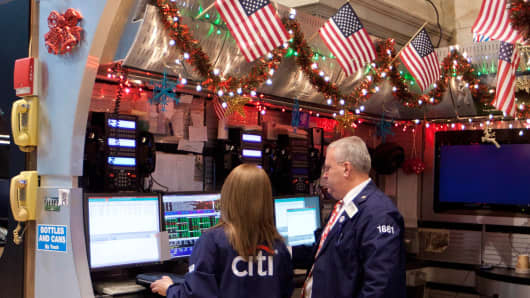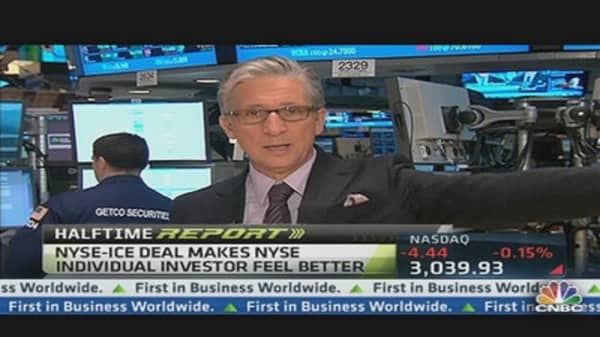The iconic and once fiercely independent New York Stock Exchange is being sold not because of stocks but for the promise of its derivatives business.
The IntercontinentalExchange, viewed not long ago as an upstart commodities and derivatives exchange, agreed to buy NYSE Euronext for $8.2 billion, creating a new global exchange that trades futures, options and stocks.
The NYSE is the very symbol of Wall Street, and with its historic building at Broad and Wall is seen as the heart of the U.S. stock market and symbol of American capitalism. But new competitors, like BATS and others have been chiseling away at its business.
NYSE, along with its electronic trading arm, Archipelago, still holds the largest share of U.S. stock trading, with about 24 percent of all U.S. equities trading. Nasdaq, its oldest and biggest rival, has 19 percent.
While investors may think of the NYSE building as the physical center of U.S. stock trading, there is not expected to be any impact on individual investors and most of the trading takes place on electronic platforms. (Read More: NYSE-ICE Deal Reflects Diminishing Value of Stock Trading Business)





